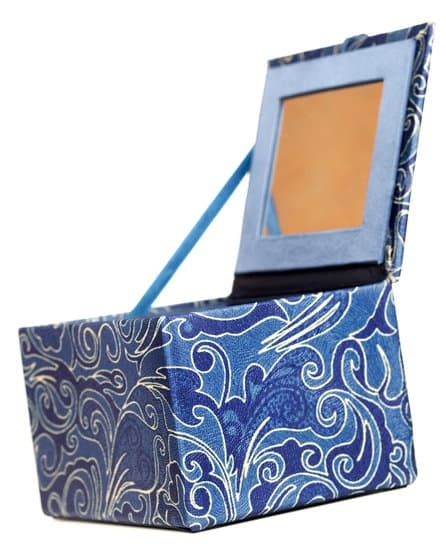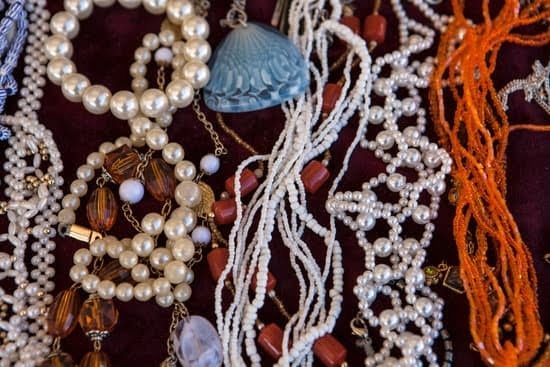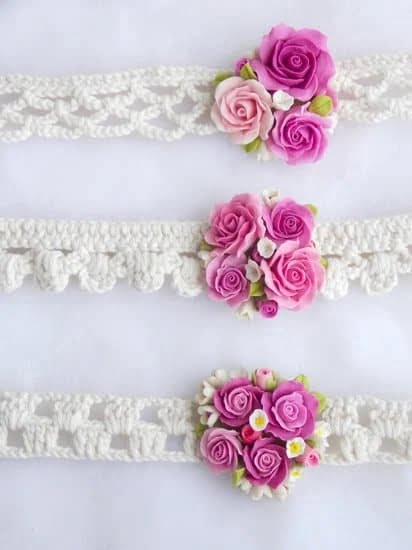Turquoise jewelry has always captivated people with its vibrant blue color and unique beauty. This precious gemstone, with its rich cultural history and geological significance, continues to be a cherished choice for adornment. However, caring for turquoise jewelry requires special attention due to its delicate nature.
In this article, we will delve into the world of turquoise jewelry care, exploring its history, geology, and the importance of preserving its timeless beauty. We will also provide you with expert tips, step-by-step cleaning guides, storage practices, and advice on preventing damage. By following our recommendations, you can ensure that your turquoise jewelry remains as stunning as the day you first laid eyes on it.
The allure of turquoise can be traced back to ancient civilizations such as the Egyptians and Persians who considered it a valuable gemstone. Its vivid blue color was thought to represent life-giving water and brought good fortune and protection to those who wore it. Today, turquoise continues to hold an undeniable appeal, not only for its aesthetic qualities but also for its rarity in nature.
Understanding the geological aspects of turquoise is essential for comprehending its fragility and why proper care is crucial. Turquoise forms when water containing copper minerals seeps into rock cavities over a long period under specific conditions. These conditions are uncommon in nature, making turquoise a relatively scarce gemstone. Its porous nature and sensitivity to chemicals make it susceptible to damage if not handled with care.
To preserve the timeless beauty of your turquoise jewelry and ensure it remains a lasting treasure in your collection, paying attention to proper care techniques is essential. In the following sections of this article, we will guide you through step-by-step cleaning methods specifically designed for turquoise jewelry and provide expert tips on storage practices.
Furthermore, we will share helpful advice on protecting your precious gem from everyday wear and tear while avoiding common mistakes often made when caring for turquoise jewelry.
Understanding Turquoise
Turquoise has a long and fascinating history that dates back thousands of years. This stunning gemstone has been prized for its vibrant blue-green color and unique patterns since ancient times. It holds special importance in various cultures around the world, from Native American tribes to ancient civilizations such as the Egyptians and Persians.
Geologically speaking, turquoise is a hydrous phosphate mineral that forms in dry, arid regions where copper-rich groundwater reacts with aluminum-rich rocks. The resulting chemical reaction gives turquoise its characteristic color. Some of the most notable sources of turquoise include Iran, Egypt, China, Mexico, and the southwestern United States.
In addition to its aesthetic appeal, turquoise has also been attributed with numerous spiritual and healing properties throughout history. Many believe that wearing turquoise can bring good fortune, protection from negativity, and even physical well-being. It has been used for centuries as a powerful talisman in many cultures.
Overall, understanding the history and geology of turquoise helps us appreciate its beauty even more. Whether you wear it for its stunning appearance or for its perceived metaphysical properties, this gemstone continues to captivate people around the world with its rich cultural heritage and natural allure.
Key Points
- Turquoise has been valued for centuries due to its vibrant color and unique patterns.
- It forms in dry, arid regions through a chemical reaction between copper-rich groundwater and aluminum-rich rocks.
- Turquoise has been believed to possess spiritual and healing properties.
The Importance of Proper Care
Turquoise jewelry has been prized for centuries for its stunning beauty and vibrant color. However, this beloved gemstone requires special attention and care to maintain its longevity and luster. Proper care is essential to prevent damage and keep turquoise jewelry looking its best for years to come.
Delicate Nature of Turquoise
Turquoise is a porous gemstone, which means it absorbs liquids, oils, and even body sweat. This unique characteristic makes turquoise particularly vulnerable to damage from substances that can alter its color or cause it to become brittle. Common culprits include perfume, lotions, oils, and household chemicals.
It’s also important to note that turquoise can be easily scratched or chipped due to its relatively soft nature, ranking between 5-6 on the Mohs scale of mineral hardness. This means that it can be easily damaged by harder materials such as quartz or granite. Keeping this in mind will help you understand why proper care is so crucial when handling turquoise jewelry.
Avoiding Excessive Exposure
Exposure to various elements such as sunlight, heat, humidity, and even sudden temperature changes can harm your turquoise jewelry. Prolonged exposure to sunlight can fade the vibrant blue color of the gemstone over time. Similarly, extreme temperatures or fluctuations in temperature can lead to cracks or fractures in the stone.
Humidity can also have a detrimental effect on turquoise by causing discoloration or a cloudy appearance. Therefore, it is best to avoid wearing your turquoise jewelry while swimming or taking part in activities that may result in excessive sweating.
Mindful Cleaning
To maintain the pristine beauty of turquoise jewelry, it’s crucial to clean it properly without causing any damage. For routine cleaning, use a soft microfiber cloth or cotton ball lightly dampened with lukewarm water. Gently wipe the surface of the gemstone and remove any dirt or oils. Avoid using harsh chemicals, detergents, or ultrasonic cleaners as they can damage the stone.
For deeper cleaning, you can mix a small amount of mild dish soap with lukewarm water. Dip a soft cloth in the soapy solution and carefully clean your turquoise jewelry. Rinse thoroughly with clean water and pat dry using a clean, soft cloth.
By following these cleaning techniques and being mindful of how you handle your turquoise jewelry, you can ensure that it remains radiant and beautiful for many years to come.
Step-by-Step Guide
Cleaning turquoise jewelry is an important part of its care routine to maintain its beauty and longevity. However, due to turquoise’s delicate nature, it requires special attention and gentle handling. This step-by-step guide will provide you with the necessary instructions to clean your turquoise jewelry effectively and safely.
Step 1: Gather the Materials
Before beginning the cleaning process, gather all the necessary materials. You will need a soft cloth or microfiber cloth, mild dish soap (without any abrasive ingredients), lukewarm water, a soft-bristled toothbrush or paintbrush, and a towel for drying.
Step 2: Prepare the Cleaning Solution
In a small bowl or container, mix a few drops of mild dish soap with lukewarm water to create a gentle cleaning solution. Avoid using harsh chemicals or commercial jewelry cleaners as they can damage the turquoise stone.
Step 3: Clean Gently
Dip the soft cloth or brush into the prepared cleaning solution and gently wipe the surface of your turquoise jewelry. Be cautious not to scrub too vigorously as excessive pressure can cause scratches or damage to the stone. Pay close attention to any intricate designs or settings where dirt may accumulate.
Step 4: Rinse Thoroughly
After cleaning, rinse your turquoise jewelry under lukewarm tap water. Ensure that all traces of soap residue are removed. Use your fingers or a gentle stream of water to avoid placing additional stress on the stone.
Step 5: Dry Properly
Pat dry your turquoise jewelry using a clean towel. Avoid rubbing or scraping the surface as this can lead to scratches. Leave it out in open air for some time until completely dry.
Remember, regular cleaning helps prevent dirt buildup and maintains the vibrancy of turquoise jewelry. It is recommended to clean your turquoise pieces every few months or whenever they appear dull or dirty. By following these steps carefully, you can enjoy your beautiful turquoise jewelry for years to come.
Storing your Precious Gem
Proper storage is crucial for maintaining the beauty and longevity of your turquoise jewelry. Follow these best practices to ensure that your precious gem stays safe and retains its vibrant color:
- Store in a Cool, Dry Place: Turquoise is sensitive to moisture and high temperatures, which can cause discoloration and damage. Keep your turquoise jewelry away from areas with humidity, such as bathrooms or basements, and avoid exposing it to direct sunlight or heat sources.
- Separate from Other Jewelry: To prevent scratching and tangling, store your turquoise pieces separately from other jewelry. Consider using individual pouches or compartments within a jewelry box to keep them protected and organized.
- Use Anti-Tarnish Strips: Tarnishing can occur on the silver components of turquoise jewelry over time. Place anti-tarnish strips in your storage container to absorb moisture and slow down the tarnishing process. These strips are readily available at most jewelry stores.
- Avoid Contact with Chemicals: Harsh chemicals found in household cleaners, perfumes, lotions, and hairsprays can damage turquoise gemstones by causing discoloration or even weakening the setting. Always remove your turquoise jewelry before coming into contact with these substances.
- Handle Carefully during Storage: When placing or removing your turquoise jewelry from storage, handle it with care to avoid potential scratches or breakage. Gently lift the pieces instead of dragging them across surfaces or pulling at them forcefully.
- Regularly Inspect for Damage: Take the time to inspect your stored turquoise jewelry periodically for any signs of damage or loose settings. If you notice any issues, promptly take them to a qualified jeweler for repair.
By following these best practices for storing your turquoise jewelry, you can help maintain its beauty and preserve its value for years to come. Remember that proper care extends beyond cleaning techniques – how you store your precious gems is just as important in maintaining their timeless appeal.
Preventing Damage
Turquoise jewelry is known for its stunning beauty and vibrant hues, but it is also delicate and requires special care to maintain its luster over time. In this section, we will discuss some helpful tips for protecting your turquoise jewelry from everyday wear and tear.
- Avoid exposing your turquoise jewelry to chemicals: Chemicals such as perfume, lotions, and hairspray can easily damage the surface of turquoise gemstones. It’s essential to remove your jewelry before applying these products to prevent any potential harm. Additionally, swimming pools with chlorine and harsh cleaning agents should be avoided while wearing your turquoise jewelry.
- Be cautious with physical activities: While turquoise is relatively durable, it can still be susceptible to scratches or chips if exposed to excessive force or impact. It is advisable to remove your turquoise jewelry before engaging in activities such as sports, gardening, or even household chores that involve heavy lifting or using harsh chemicals. Always remember to handle your turquoise pieces with care and avoid dropping them on hard surfaces.
- Protect against direct sunlight: Like many gemstones, prolonged exposure to direct sunlight can cause the color of turquoise to fade over time. To keep your jewelry looking its best, store it in a cool, dark place when not in use or consider using a jewelry box with compartments lined with soft fabric to shield it from harmful UV rays.
By following these simple tips, you can help protect your turquoise jewelry from everyday wear and tear and preserve its natural beauty for years to come.
- Avoid exposing your turquoise jewelry to chemicals
- Be cautious with physical activities
- Protect against direct sunlight
Avoiding Common Mistakes
Turquoise jewelry is adored for its vibrant blue-green hue and unique beauty. However, caring for this precious gemstone requires special attention to ensure its longevity. In this section, we will discuss some common mistakes that should be avoided when caring for turquoise jewelry.
Firstly, it is important to note that turquoise is a porous stone, which means that it can absorb liquids and oils easily. One common mistake to avoid is exposing your turquoise jewelry to chemicals such as household cleaners, perfumes, and hairsprays. These substances can cause discoloration and damage to the gemstone. It is best to remove your turquoise jewelry before using any cleaning products or applying cosmetics.
Another common mistake when caring for turquoise jewelry is subjecting it to excessive sunlight or heat. Turquoise can be sensitive to direct sunlight and prolonged exposure can lead to fading of the color or even cracks in the stone. It is advisable to store your turquoise jewelry away from windows or areas with direct sunlight, and avoid leaving it in hot places like cars or saunas.
Furthermore, wearing your turquoise jewelry during activities that may put it at risk of impact or scratching should be avoided. While turquoise has a relatively moderate hardness on the Mohs scale, it is still susceptible to damage if not handled with care. Avoid wearing your turquoise jewelry while engaging in activities such as gardening, sports, or any other strenuous physical activities where there are chances of impact or rough handling.
To summarize, proper care for turquoise jewelry involves avoiding exposure to chemicals, excessive sunlight or heat, and risks of impact or scratching. By following these guidelines and taking the necessary precautions, you can ensure that your beloved pieces of turquoise jewelry retain their timeless beauty for years to come.
| Mistakes | Effects |
|---|---|
| Exposing the jewelry to chemicals | Discoloration and damage |
| Prolonged exposure to sunlight or heat | Fading of color, cracks in the stone |
| Wearing during activities with risk of impact or scratching | Potential damage to the gemstone |
Expert Tips
Turquoise jewelry professionals have a wealth of knowledge when it comes to caring for and preserving the beauty of turquoise jewelry. Here are some expert tips and insider advice from professionals in the industry:
- Avoid chemical cleaners: Turquoise is a porous gemstone that can be easily damaged by harsh chemicals. It is important to avoid using chemical cleaners or jewelry cleaning solutions on turquoise jewelry. Instead, opt for gentle cleaning methods that will not harm the delicate stone.
- Be cautious with water: While turquoise is relatively stable, exposure to water can cause the stone to fade or develop discoloration over time. It is best to remove turquoise jewelry before swimming, bathing, or doing household chores that involve water.
- Store properly: Proper storage is vital for preserving the quality of your turquoise jewelry. To prevent scratching or damage, store each piece individually in a soft pouch or wrapped in a soft cloth. Avoid storing turquoise pieces alongside other gemstones or harder materials that can potentially scratch the surface.
- Protect from direct sunlight: Turquoise can be sensitive to prolonged exposure to direct sunlight and extreme heat. To prevent color fading or discoloration, it is advisable to store your turquoise jewelry in a cool place away from direct sunlight when not being worn.
- Wear with care: Although turquoise has been used for centuries in various forms of adornment, it is still considered a relatively soft gemstone compared to other stones like diamonds or sapphires. As such, it is important to exercise caution when wearing turquoise jewelry to avoid any accidental impact or excessive force that may lead to chipping or breakage.
| Expert Tip | Expert Advice |
|---|---|
| Avoid chemical cleaners | Do not use chemical cleaners on turquoise jewelry; instead, opt for gentle cleaning methods. |
| Be cautious with water | Remove turquoise jewelry before swimming, bathing, or doing household chores involving water. |
| Store properly | Store each piece individually in a soft pouch or cloth to prevent scratching. |
| Protect from direct sunlight | Avoid prolonged exposure to direct sunlight or extreme heat to prevent color fading or discoloration. |
| Wear with care | Exercise caution to avoid accidental impact or excessive force that may lead to chipping or breakage of the turquoise. |
By following these insider tips and advice from turquoise jewelry professionals, you can ensure that your treasured turquoise pieces remain beautiful and well-maintained for years to come. Remember, proper care is essential in preserving the timeless beauty and value of your turquoise jewelry.
Frequently Asked Questions
How often should I clean my turquoise jewelry?
Turquoise jewelry should be cleaned regularly to maintain its beauty and longevity. It is recommended to clean your turquoise pieces every few months or whenever you notice a buildup of dirt or oils on the surface. However, it is important not to overclean turquoise, as excessive cleaning can damage the stone and cause it to lose its natural luster.
Can I use regular jewelry cleaners on turquoise?
No, it is not advisable to use regular jewelry cleaners on turquoise. Many commercial jewelry cleaners contain harsh chemicals that can be abrasive and harmful to the stone. These cleaners may strip away the polish and patina of the turquoise, resulting in a dull appearance. Instead, opt for mild, non-abrasive cleaners specifically designed for delicate gemstones like turquoise.
How should I store my turquoise jewelry?
Proper storage is crucial for preserving the quality of your turquoise jewelry. To prevent scratches and other damage, store your pieces individually in soft cloth or velvet pouches. Avoid storing them in direct sunlight or extreme temperatures, as this can cause discoloration or fading of the stone. Additionally, keep your turquoise away from other harder gemstones or metals that could potentially scratch or chip the delicate surface of the turquoise.
Can I wear my turquoise jewelry while swimming or showering?
It is generally advised to avoid wearing your turquoise jewelry while swimming or showering. Exposing your pieces to water can compromise their integrity and lead to discoloration or damage over time. Water can also damage any metals used in the setting of your stones, such as silver or gold. To ensure the longevity of your turquoise jewelry, it is best to remove it before engaging in activities involving water.
How do I know if my turquoise jewelry needs professional restoration?
If your turquoise jewelry has significant damage, such as cracks, chips, or a loss of color, it may require professional restoration. A skilled jeweler with experience in turquoise can assess the condition of your piece and recommend the appropriate repairs. It is important not to attempt any DIY repairs on valuable or antique turquoise jewelry, as this could potentially cause further damage. Always consult a professional for any extensive restoration work.
Conclusion
Turquoise jewelry is not only a beautiful and fashionable accessory but also a precious gem that requires proper care to maintain its timeless beauty. Throughout this article, we have discussed the history, geology, cleaning methods, storage techniques, preventative measures, common mistakes to avoid, expert tips, and answered frequently asked questions about caring for turquoise jewelry. By following these guidelines and advice, you can ensure that your turquoise jewelry remains in excellent condition for years to come.
It is important to clean your turquoise jewelry regularly using mild solutions and soft materials to prevent any damage or discoloration. Additionally, storing your jewelry properly in a cool and dry place away from direct sunlight will help protect it from excessive heat or humidity.
Lastly, it is crucial to handle your turquoise jewelry with care and avoid exposing it to harsh chemicals or excessive impact. By following these simple guidelines and being mindful of how you wear and store your turquoise jewelry, you can enjoy its beauty for many years to come.
| Proper Cleaning Solutions | Storage Tips | Preventative Measures |
|---|---|---|
| Use mild soap and water solution | Store in a cool and dry place away from direct sunlight | Avoid exposing to harsh chemicals or excessive impact |
| Consider using professional ultrasonic cleaners occasionally | Wrap individually in soft cloth or store in padded containers | Remove before engaging in physical activities or using cleaning products |
Bonus Section
As we conclude this guide on caring for turquoise jewelry, it is important to address a fascinating aspect of turquoise that has been debated for centuries – its alleged healing powers. In this bonus section, we explore the myth or reality behind the healing properties attributed to turquoise.
Throughout history, turquoise has been revered as a stone with metaphysical qualities. It is believed to possess spiritual and healing powers that can benefit the wearer in various ways. Some claim that turquoise promotes overall wellbeing and positive energy, while others suggest its ability to enhance communication and alleviate stress or anxiety.
However, it is essential to approach these claims with skepticism and remember that they are primarily rooted in folklore and ancient traditions rather than scientific evidence. While many individuals have experienced personal benefits from wearing turquoise, it is crucial to rely on conventional medical practices for any serious health concerns.
Ultimately, the true power of turquoise lies in its timeless beauty and rich cultural history. Whether you choose to believe in its alleged healing properties or not, caring for your turquoise jewelry with proper cleaning, storage, and protection will ensure its longevity so you can continue to enjoy its enchanting allure for generations to come.
In conclusion, caring for turquoise jewelry requires a delicate balance between preserving its physical integrity and appreciating its historic significance. By following the steps outlined in this guide, you can maintain the beauty of your turquoise pieces and prolong their lifespan.
Remember that each piece of turquoise jewelry is a unique treasure that holds both aesthetic value as well as potential historical and cultural importance. Taking good care of your turquoise jewelry ensures that future generations can continue to cherish these extraordinary gems.
Frequently Asked Questions
Can turquoise be worn everyday?
Turquoise can certainly be worn everyday, as it is a durable and versatile gemstone. Its vibrant blue-green color adds a unique touch to any outfit, making it suitable for both casual and formal wear.
However, since turquoise is softer than many other gemstones, it may be prone to scratches or damage if not properly cared for. It’s important to avoid exposing turquoise to harsh chemicals or activities that could potentially harm the stone.
Can you wear turquoise jewelry in the shower?
While turquoise is generally considered to be water-resistant, it is not recommended to wear turquoise jewelry in the shower. The hot water and harsh soaps used during showering can strip away the natural oils in turquoise, causing it to become dull and lose its luster over time.
Additionally, exposure to shampoo, conditioner, and other hair products can also negatively affect the appearance of turquoise jewelry. To keep your turquoise looking its best, it’s best to remove it before entering the shower.
What do you clean turquoise jewelry with?
When cleaning turquoise jewelry, it’s important to handle the gemstone with care to avoid causing any damage. Since turquoise is porous and may absorb liquids or oils easily, it should not be soaked in water or cleaned with chemical-based cleaners. Instead, a gentle cleaning approach should be used.
A soft cloth slightly dampened with warm water can help remove surface dirt or debris from the jewelry. It is crucial not to scrub too vigorously when cleaning turquoise as this could potentially scratch or damage the stone. After wiping away any residue from the jewelry, make sure to thoroughly dry it before storing or wearing again.

Welcome to my jewelry blog! My name is Sarah and I am the owner of this blog.
I love making jewelry and sharing my creations with others.
So whether you’re someone who loves wearing jewelry yourself or simply enjoys learning about it, be sure to check out my blog for insightful posts on everything related to this exciting topic!





